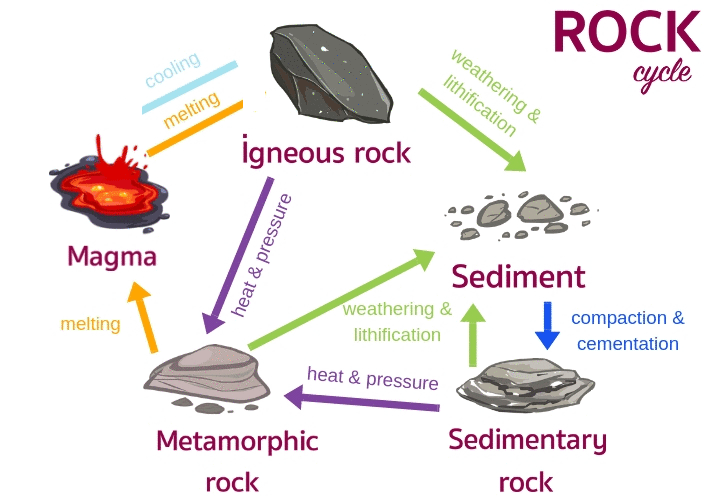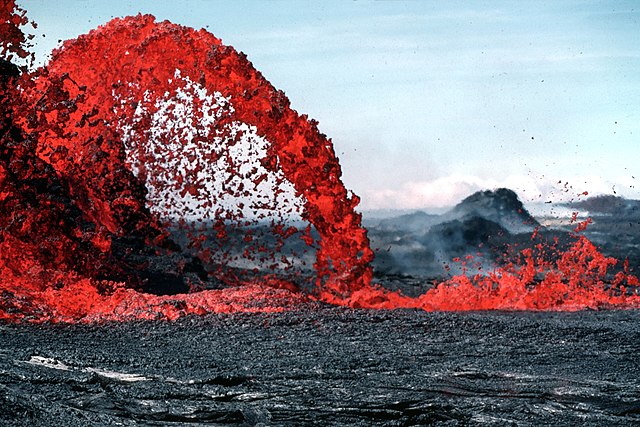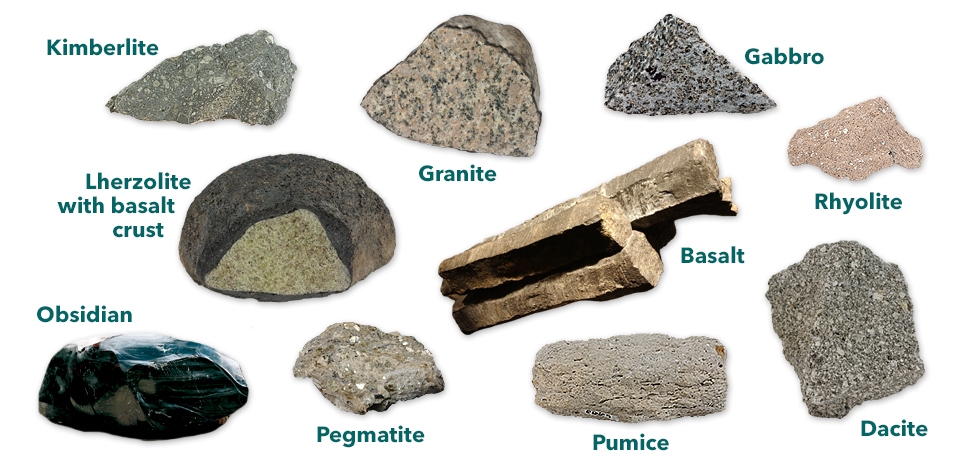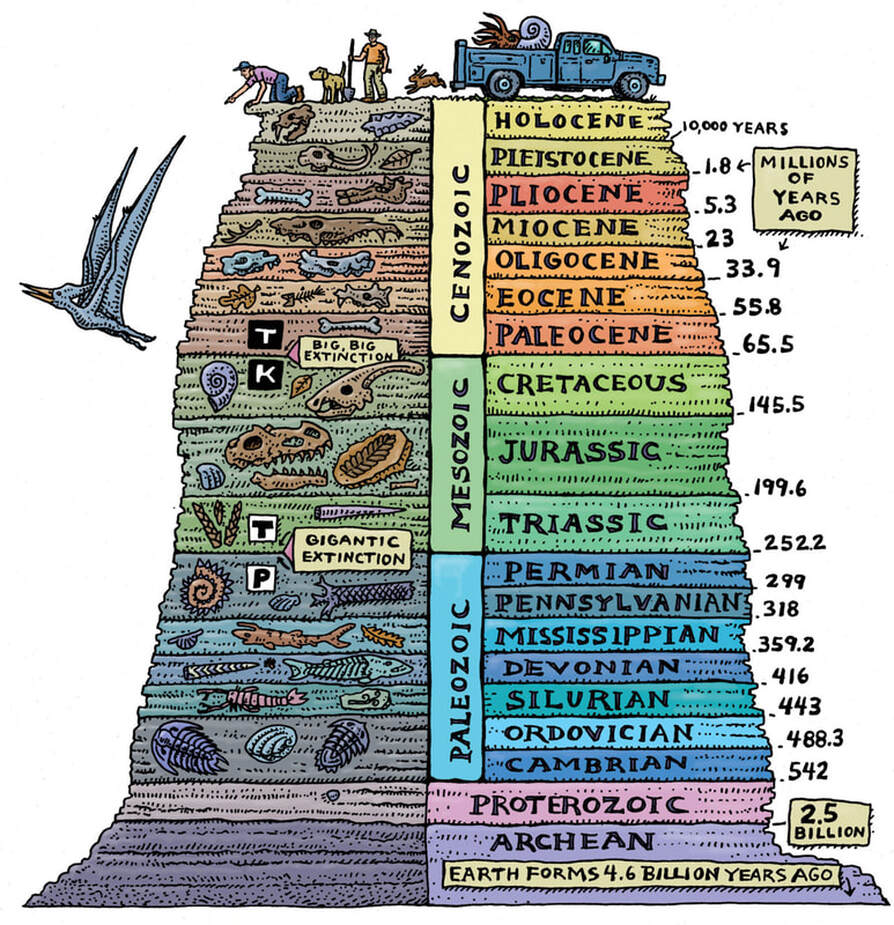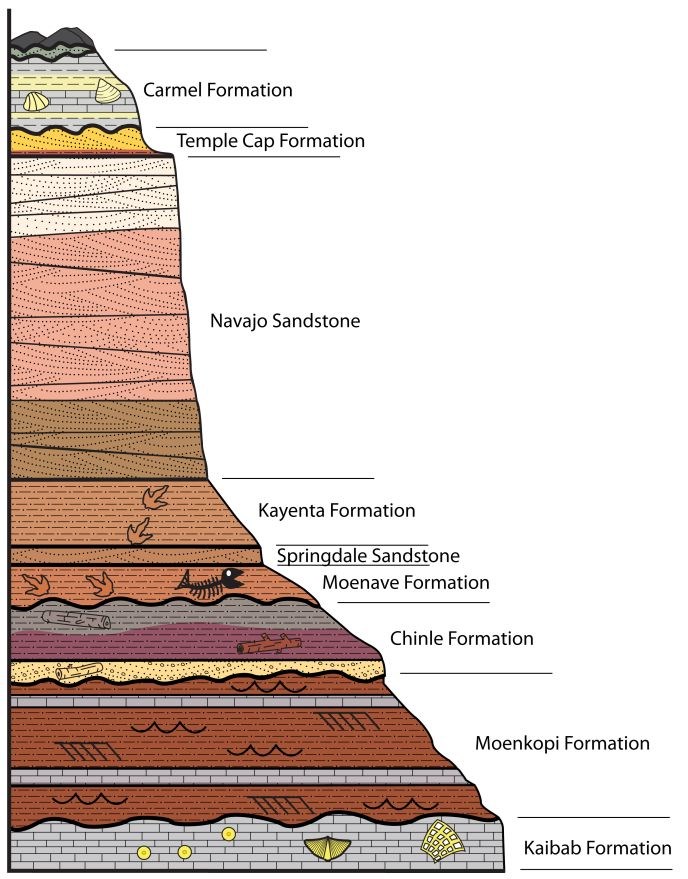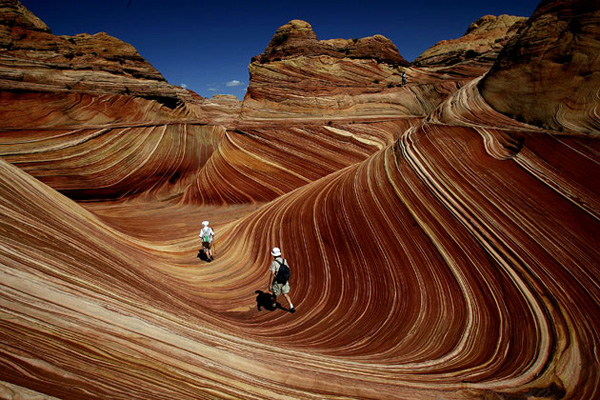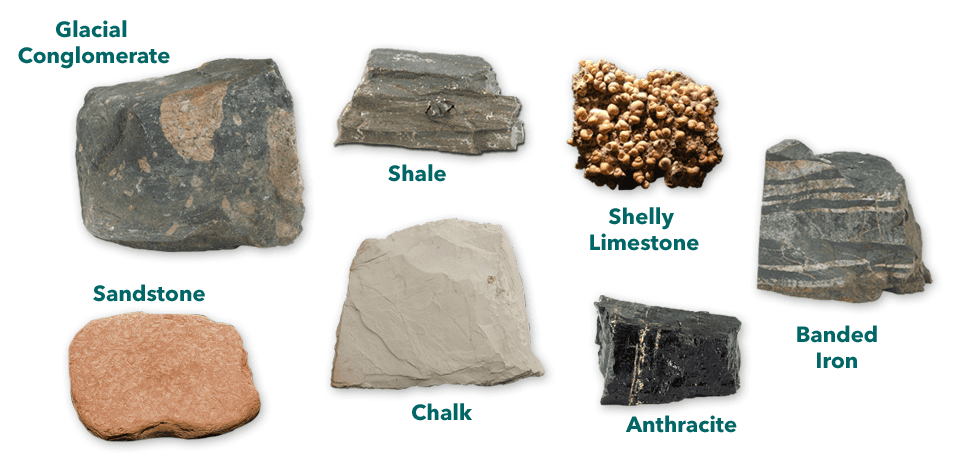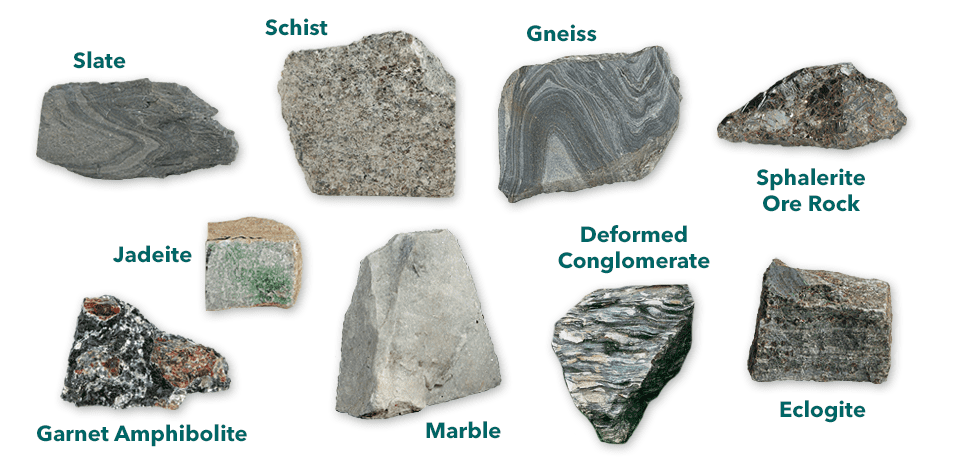Study Guide: Types of Rocks
- Rocks travel through a Rock Cycle, usually from igneous, to sedimentary, to metamorphic, and finally back to igneous.
- There are three kinds of rocks, igneous, sedimentary, and metamorphic.
- Igneous rocks form out of magma that is pushed up to the surface of the Earth. Three examples of igneous rock are…
- Sedimentary rocks accumulate in layers when particles settle out of water or air. Sedimentary rocks often contain fossils. Three examples of sedimentary rock are…
- Metamorphic rocks form when existing rocks are changed by heat, pressure, or reactive fluids, such as hot, mineral-laden water. Three examples of metamorphic rock are…
- Most rocks are contain the minerals silicon and oxygen, the most abundant elements in the Earth’s crust.
The Rock Cycle
There are three main types of rocks: igneous, sedimentary, and metamorphic. Each of these rocks are formed by physical changes—such as melting, cooling, eroding, compacting, or deforming—that are part of the rock cycle.
Sedimentary and igneous rocks began as something other than rock. Sedimentary rocks were originally sediments, which were compacted under high pressure.
Igneous rocks form when liquid magma that has emerged onto the surface of the Earth cools and hardens.
A metamorphic rock, on the other hand, begins as a rock—either a sedimentary, igneous, or even a different sort of metamorphic rock. Then, due to various conditions within the Earth, the existing rock is changed into a new kind of metamorphic rock. For example shale—a sedimentary rock—can turn into slate—a metamorphic rock.
Most rocks contain the minerals silicon and oxygen, the most abundant elements in the Earth’s crust.
Igneous Rocks
Igneous rocks form when molten rock (magma or lava) cools and solidifies. Some form below Earth’s surface, some above.
There are two groups of igneous rocks:
- Intrusive igneous rocks crystallize below Earth’s surface, and the slow cooling that occurs there allows large crystals to form. Examples of intrusive igneous rocks are: diabase, diorite, abbro, granite, pegmatite, and peridotite.
- Extrusive igneous rocks erupt onto the surface of the Earth, where they cool quickly to form small crystals. Some cool so quickly that they form glass. These rocks include: andesite, basalt, dacite, obsidian, pumice, rhyolite, scoria, and tuff.
Sedimentary Rocks
Sedimentary rocks form when particles settle out of water or air, or by precipitation of minerals from water. They accumulate in layers.
There are three basic types of sedimentary rocks.
- Clastic sedimentary rocks form from the accumulation and hardening of sediment. Examples include: breccia, conglomerate, sandstone, siltstone, and shale.
- Chemical sedimentary rocks form when dissolved materials precipitate from solution. Examples include: chert, some dolomites, flint, iron ore, limestones, and rock salt.
- Organic sedimentary rocks form from the accumulation of plant or animal debris. Examples include: chalk, coal, diatomite, some dolomites, and some limestones.
Sedimentation Experiment
- Find two large and strong jars with good lids.
- Fill one jar about halfway full with soil from a garden (or a natural area with lots of growing plants).
- Fill the other jar with soil from an area that does not have many plants growing in it.
- Fill both jars with clear water, and close tightly.
- Gently swirl both jars unit the soil and water is completely mixed.
- Set both jars in a quiet place where they will not be touched, and wait for the contents to settle (sedimentation).
- Once there is a layer of clear water near the top of the jars the process is finished.
- Observe the layer each jar. What do you see? What can you conclude about the contents of each type of soil?
Metamorphic Rocks
Metamorphic rocks result when existing rocks are changed by heat, pressure, or reactive fluids, such as hot, mineral-laden water. Exposure to extreme conditions alters the mineral, texture, and chemical composition of these rocks. There are two basic types of metamorphic rocks.
- Foliated metamorphic rocks are layered or banded. Examples of foliated rocks include: gneiss, phyllite, schist, and slate.
- Non-foliated metamorphic rocks do not have a layered or banded appearance. Examples include: hornfels, marble, novaculite, quartzite, and skarn.



